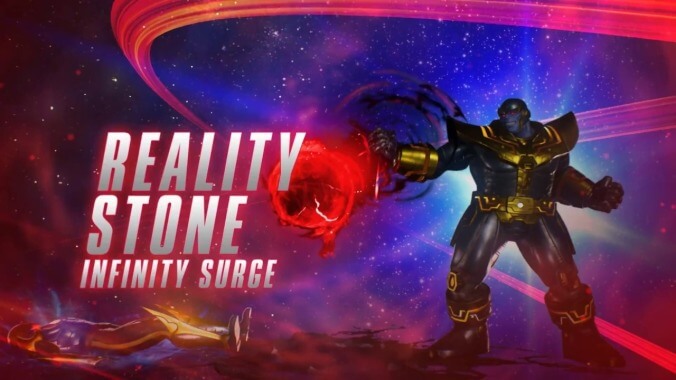Marvel Vs. Capcom: Infinite epitomizes the simple pleasure of pushing buttons

No matter how good games get at telling poignant stories or expressing eye-opening personal experiences, there’s a more primal underlying truth from which they’ll always benefit: It’s really fucking fun to push buttons and make cool stuff happen on a TV screen. Few series exemplify that simple axiom like Marvel Vs. Capcom. Ever since the storied Japanese developer nabbed the Marvel license and started building wild fighting games around it in 1994, it has let players take hold of its famous comic-book characters and enact their own spectacular brawls, filling the screen with lasers and bouncing opponents around like volleyballs with a few well-timed button slaps and joystick waggles. Even without the dedication and dexterity to play proficiently, just going crazy on the controls would sometimes lead to some eye-melting imagery that you could feel good about triggering regardless of whether it led to victory.
The Marvel brand has become so much bigger since the release of Marvel Vs. Capcom 3, which predates every Marvel movie but Iron Man and Iron Man 2. Its increased mainstream appeal clearly pushed the developers at Capcom to give Marvel Vs. Capcom: Infinite, the newest game in the crossover series, a simpler path to the visceral thrill of pulling off double-digit combos and stylishly smacking superheroes around. The game is wildly successful at getting straight to the pleasure of pushing buttons, and for those of us who don’t have the skills to harness MVC’s fidgety complexity, which Infinite also has in spades, this reach for accessibility is a godsend.
It all starts with the concept of auto-combos, which Infinite borrows from a handful of recent fighting games and implements perfectly. At its most basic, the essential bite-sized loop of a Marvel combo has you landing a few hits, knocking the opponent into the air, smacking them some more, and slamming them back to the ground, possibly to follow up with more hits or a flashy super move. Infinite allows you to do all that just by pressing a single button a few times. There’s even a way to pull off a “hyper combo”—MVC’s name for the lavishly animated super moves that fill the screen with missiles or fireballs or robot animals, depending on which character you’re using—by hitting two attack buttons at once, eschewing the usual circle movements that can trip up a lot of players. Together, they give you all the satisfaction and eye candy Marvel is known for without needing to go through the training a layperson would usually require to whip their fingers into shape.
For the kind of person who might want to pick up Infinite and blow through the stuff there is to do that doesn’t involve heading online and getting their ass kicked, this is such a necessary change. The short and silly story mode lacks the visual chops and cinematic grandeur of something like Injustice 2 or even Tekken 7, but getting into its fights and being able to rely on these simplified techniques as a stylish, fun-to-execute foundation for every fighter makes its several hours of wacky worlds colliding melodrama that much more entertaining. The same goes for Arcade mode, which serves as a great place to take that auto-combo foundation and experiment with branching out. And of course, making the game more immediately accessible makes it way more enticing for everyone involved when you spend a few hours casually throwing down with your similarly unskilled buddies.
All that simplification will probably sound blasphemous to pre-Infinite adherents, but the game integrates these changes without muddying the flow and efficiency needed for higher level play. Automatic combos are way less damaging than the elaborate strings you could put together by mixing up your button presses, and relying solely on the simplified hyper combo input locks you into performing just one of your super moves and missing out on the utility of each character’s full stock of ostentatious offense. And while the barrier to entry might have been lowered alongside the number of teammates you’ll take into each battle, the addition of Infinity Stone powers and instant character swapping—both of which are mercifully handled with a single button each and easily integrated into combos—opens skirmishes up to a creative depth that feels active, improvisational, and rewarding in a way few other fighters are able to manage. Assuming they stick with it, watching pros play this game in the coming months and years is going to be amazing.
The real accomplishment of Marvel Vs. Capcom: Infinite is that it’s able to make a schmo like me feel as if I’m pulling off the same jaw-dropping feats of combo ingenuity as those experts. When you’re in the moment and it feels that good just to push buttons and watch your handiwork play out on screen, all the complaints you could throw at the game, from its X-Men-less roster (thanks for that, 20th Century Fox) to the poorly sculpted plasticine faces of its human characters, couldn’t be less relevant.